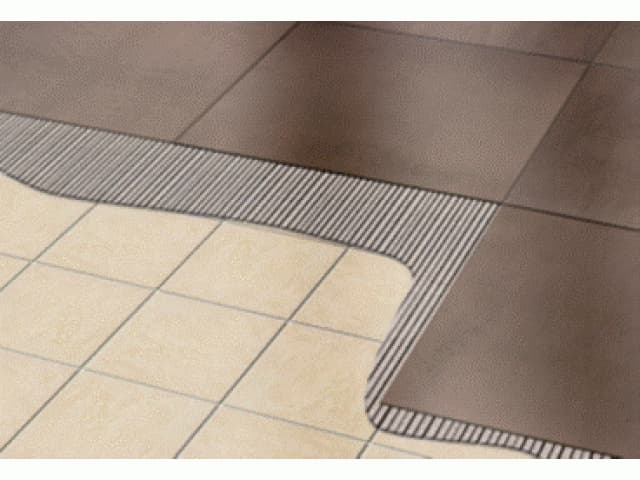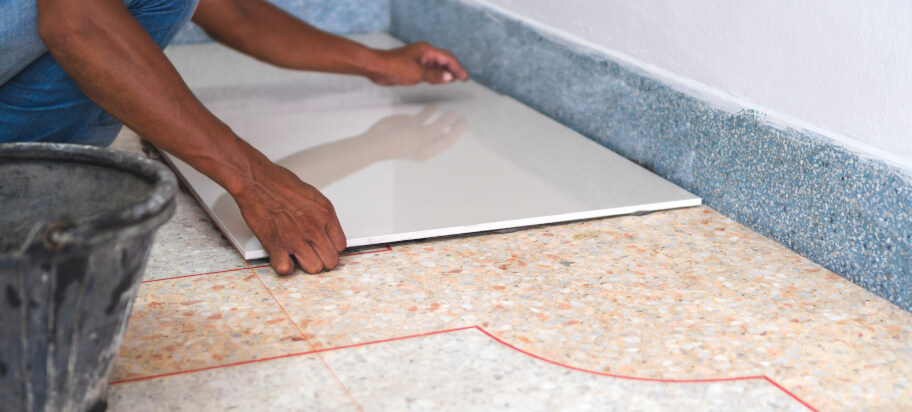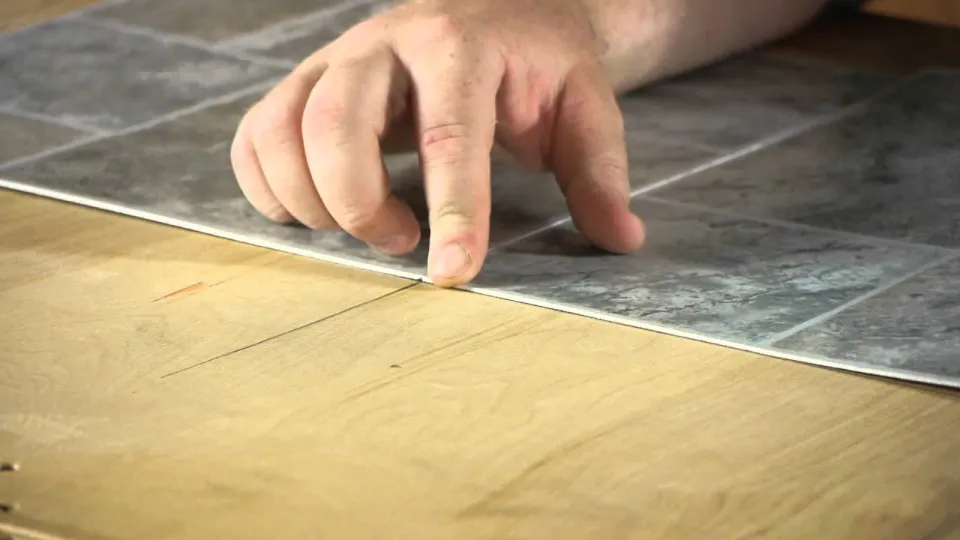To begin with, can you tile over tile? Below will give you everything about tiling.
In short, you can tile over tile as long as you’re working on a fairly sound surface. Mold and mildew should not be present on the existing tile’s surface, nor should there be any warping or oddly placed tiles that might otherwise obstruct the smooth application of a new layer. The surface should also be completely level (including the grout).
Continue reading, and I’ll give you more details on can you tile over tile.
Can You Tile Over Tiles?
Can you tile over tile? Yes, you can, and it can also be very useful for a quick room update. Saving time and effort is always a good idea because removing the old tiles is laborious.
Prior to selecting this approach for a bathroom or kitchen update, there are some things to keep in mind. Consider the advantages and disadvantages of “can you tile over tile”
Pros
- One of the main advantages of tiling over existing tiles is that it is time-saving. This simpler approach will spare you the hassle of taking out the old tiles, putting in the new ones, and then spending a lot of time cleaning everything up.
- Another advantage of this renovation technique is its affordability. As a result of not having to rent large, potentially dangerous stripping machines, it is more affordable.
In general, this approach is do-it-yourself (DIY) friendly and a great way to spruce up the kitchen or bathroom area. Before you make your final choice, there are still some things to think about.
Cons
- Laying tiles over old tiles would result in adding extra height to your floor. This might become a problem if the doors or cabinets start to get blocked by the new floor level. Most likely, they have already been leveled to the old surface.
- Another drawback could be the step to the bathroom entrance becoming too high and a hazard accident spot.
- Your existing tiles must be in relatively good condition – evenly placed and without cracks to retain moisture if you consider going the Tiling over severely harmed or uneven tiles won’t make the room better; instead, it will only lead to more problems and potential repairs.
To begin with, what is tile flooring? A step in the process involves selecting the appropriate shape, size, hardness, and style. When everything comes together, tile provides you with a lovely, long-lasting, and low-maintenance floor.
Where In Your Home Can You Lay Tile?
After answering “can you tile over tile?”, let’s focus on where in your home can you lay tile. While it’s most common to install tile in the kitchen and bathroom, there are many other tiling ideas that you can implement in your home. As a strong, water-resistant material that’s easy to clean, tile works best in rooms where water exposure is likely. It is utilized frequently in kitchens and bathrooms because of this.
Tile can be used in any room of your house, though! Go for it if you want a mosaic tile living room floor with a Grecian theme! Nothing is stopping you from experimenting with mixed media tiled flooring on the walls of your bedroom. Tile also makes an exceptional surrounding material or background for a fireplace.

“How to choose the right grout color for your tile” It’s a question I hear all the time. The short answer is that there aren’t any set rules, but there are some general principles that can help you make decisions you won’t regret.
Why Not Install One Tile On Top Of Another?
This is frequently the first query asked whenever someone is taking on a remodeling or renovation project. Do I really need to rip out all of that tile that someone else already laid and start over?
While you technically can install new tile over old tile in some circumstances, it’s really a practice that should be avoided. We are aware that the response you were hoping for was probably not given. However, investing a little more time in the demo at the beginning of your project can end up saving you a lot of time, work, energy, and money.
Here are the main factors to consider can you tile over tile:
1. The best surface for new tiles to grip is not one with previously laid tiles. One of the most crucial elements in making sure that your tiling job will last for many years is the bond between your adhesive and your tile. You want to make sure the wall or substrate where the tiles are being installed is as level as possible to ensure the adhesive has properly covered the bottom of your tile. The adhesive won’t be able to properly bond with the underside of the new tile if the surface is uneven, such as from zellige-style tiles or areas where grout lines create a dip. You’ll risk having tiles lift up after installation is complete, or even having water leak between the layers and cause rot and damage
2. Not all adhesives can bond tiles together. Many thinsets and tile mortars are designed to bond with a backerboard or substrate and the bottom of a tile; they may not properly bond with the surface of a glazed ceramic tile or polished glass tile. Although these tiles have unique bottom backings that will give them a solid grip, that doesn’t necessarily mean they’ll make a suitable surface for tiling.
3. By using two tiles instead of one, you increase both height and weight. Remember that wall tiles must be delicate and light enough to stick to your drywall or plaster. If you lay tile on top of tile, the weight will be doubled and could possibly be so great that it would damage your wall. In order to avoid fittings jamming or doors sticking, floor tiles need to have enough space between their surface and door openings, appliances, and furniture. Doubling the thickness of the flooring by tiling over tile is not recommended.
4. Following tile installation, any pores or gaps may result in problems. The best surfaces to tile on, according to tile experts, are as spotless as possible. In order to prevent moisture from penetrating or tiles from settling or shifting after installation, make sure there isn’t any debris, dust, cracks, gaps, or large pores. The more installation flexibility you have, the greater the chance that your lovely new tiles will sustain damage, crack, or become moistened.
Above are the main factors to consider can you tile over tile? Any one of these issues could be enough to ruin your freshly laid tile, costing you much more time and money than if you had simply ripped out the old tile. And a successful demo day can be very cathartic! Put on your mask, grab your hammer, and start smashing!
Read about: What Is Hot Drywall Mud?
Should You Try Do-it-yourself Tile Jobs?
So, can you tile over tile? Should you try do-it-yourself tile jobs? There are certain renovations that you should never attempt to do yourself when it comes to home improvement. Any work involving gas lines, roofing, electrical systems, or plumbing adjustments falls under this category. You should be fine as long as none of those projects conflict with your tile installation.
Before You Get Started, Consider The Following
After answering “can you tile over tile”, let’s consider the following things when tiling. While it is possible to install tile by yourself, you should make sure to take everything into account before you start. Renovating flooring by yourself can be an in-depth process, so keep the following in mind before you begin:
Are The Right Tools Available To You?
Laying tile is an intensive process that requires specialized tools, especially if you want to or need to remove the existing flooring or surfacing. The equipment you might need is covered below. However, if you don’t already have these tools, even getting them can be pricey.
Check your current stock of renovation tools to ensure you have what you need. If you don’t, feel free to browse our full catalog of products to fill any gaps.
Aren’t You Experienced?
One of the main reasons why people hire contractors for tiling projects is because of their expertise. We’re not saying that you need to be an expert in tile laying, but you do need to have an exacting eye for details and measurements. If you don’t have that, then your project will look less like a gorgeous DIY and more like a “D-I-Why.”
In The Long Run, Is It Cheaper?
Another common reason that people consider doing their own home improvement project like custom tile installation is due to the misconception that it might be cheaper to do it themselves. However, if you lay your tile incorrectly, you might have to redo entire project. This will increase your material costs and extend the project’s timeline. Speaking of…
Are You Able To Complete The Project In Time?
It shouldn’t take very long to lay tiles when done by a pro. It will, of course, take longer to complete your project if you lack their experience.
In addition, while you’re working on tiling, you may be unable to use your shower, bathroom, kitchen, or fireplace. As a result, before you begin, make sure you have enough time to complete the project to your satisfaction.
Suggested reading: What color grout to use with gray tile? Overall, some colored grout contrasts with gray tiles: light gray, off white, taupe, brown, charcoal gray, cream, dark gray, and gray porcelain.
How To Tile Over Existing Tiles?
After answering “can you tile over tile”, let’s talk abut how to tile over tile. Examine the condition of the current tile flooring before you begin. Tap each tile and listen for a hollow sound to check for any loose tiles. You can still cover any noises with tiles if you hear any. Nevertheless, it’s wise to allow no more than 5% of hollow areas. Consider replacing loose tiles in large quantities before tiling overload occurs.
What you’ll need is as follows:
- Clean cloths
- Gloves
- Water
- Mild detergent
- Primer
- Tile adhesive
- Grout
- Trowel
Clean And Prepare The Area
You must thoroughly clean the existing floor before you begin to install tiles. Don’t skip this step; you’ll be glad you did when drying time is shortened and the risk of mildew or bacteria growth is reduced. Sand and other debris can be removed using a vacuum, and then the area can be washed using soapy water. Rinse and dry well.
To check for unevenness, remove all the furniture. The surface that needs leveling is packed with glue. You can paint a layer of primer over the existing tiling and let it dry for a stronger bond between the two layers of tiles.
Lay In Stages
There’s no need to rush the prep work. As drying times can vary, it is best to install the new tiles one at a time. Additionally, after applying the bonding agent to the tile, move quickly; otherwise, the tile may dry before you can install it. “With the edge of your trowel, make straight lines along the wet surface; the grooves will help with drying and adhesion.
Position The Tiles As You Go
Before pressing it firmly to the floor, place each tile on the newly scored adhesive. Till every new tile is in place, repeat the same procedure. If the original tiling is still in excellent condition, you can simply apply adhesive to the back of the new tile.
Seal Off Your Work
Grouting the spaces between the tiles is the finishing touch. Using grout is a crucial step in preventing moisture buildup and mildew development on the floor. Choose pre-mixed grout from the hardware store to save time and effort. Apply it swiftly in a single pass.
Additional considerations include the following:
- Consult a professional if the base is made of plasterboard; two layers of tiles may cause structural damage because there is a maximum weight per square centimeter.
- The adhesive used for the initial laying of tiles is different from the adhesive used for the subsequent laying of tiles. Pick your bonding agent carefully. It is typically recommended to use the same adhesive brand as the primer. There are two types of adhesive used when tiling over preexisting tiles: matt finish and gloss finish.
- Make sure to include the floor elevation (3 cm on average) in the calculation; remove doors and bathroom storage units as needed to make the necessary cuts.
If homeowners don’t know how to fix cracked tiles, they might encounter hairline fractures on their tile floors. Here is how to repair a broken floor tile without replacing it.
FAQs
Is Tiling over Tiles a Good Idea?
Tiling over tiles is a great way to update and modernise the design of any space without the expense and hassle of removing existing tiles. The cost of tiling over existing tiles is much lower than removing them. The need to hire specialized equipment, labor, or tools to remove old tiles and adhesive is eliminated.
What is the Disadvantage of Tile over Tile?
You will need to remove broken, chipped, or damaged tiles while prepping your old floor. If there are numerous damaged tiles, it may be more efficient to remove the old tiles entirely and redo the tiling from scratch. The weight of tiles, especially ceramic tiles, is another drawback.
Do You Need to Waterproof When Tiling over Tiles?
There is no way to completely waterproof the floor after the ceramic tile has been installed, unless you replace the tile and install a reliable waterproof membrane at the same time. Some individuals will attempt to seal the grout joints, but this does not waterproof it.
Can You Put New Tiles on Top of Old Ones?
If your old ceramic tile is worn or dated, you can lay new tile right over the old, and avoid the huge job of tearing out the old tile. Experts frequently engage in it.
How Hard is It to Tile over Tile?
So, in short, you can tile over tile as long as you’re working on a fairly sound surface. Mold and mildew should not be present on the existing tile’s surface, nor should there be any warping or oddly placed tiles that might otherwise obstruct the smooth application of a new layer. The surface should also be completely level (including the grout).
Conclusion: Can You Tile Over Tile?
The post concentrated on the topic of After answering “can you tile over tile”.
You can probably leave your existing tiles under your new layer of tile when putting in a new floor or even a backsplash if they are in reasonably good shape—evenly spaced, without cracks, and not seeming to retain any moisture.
I would like to thank you once more for reading.



